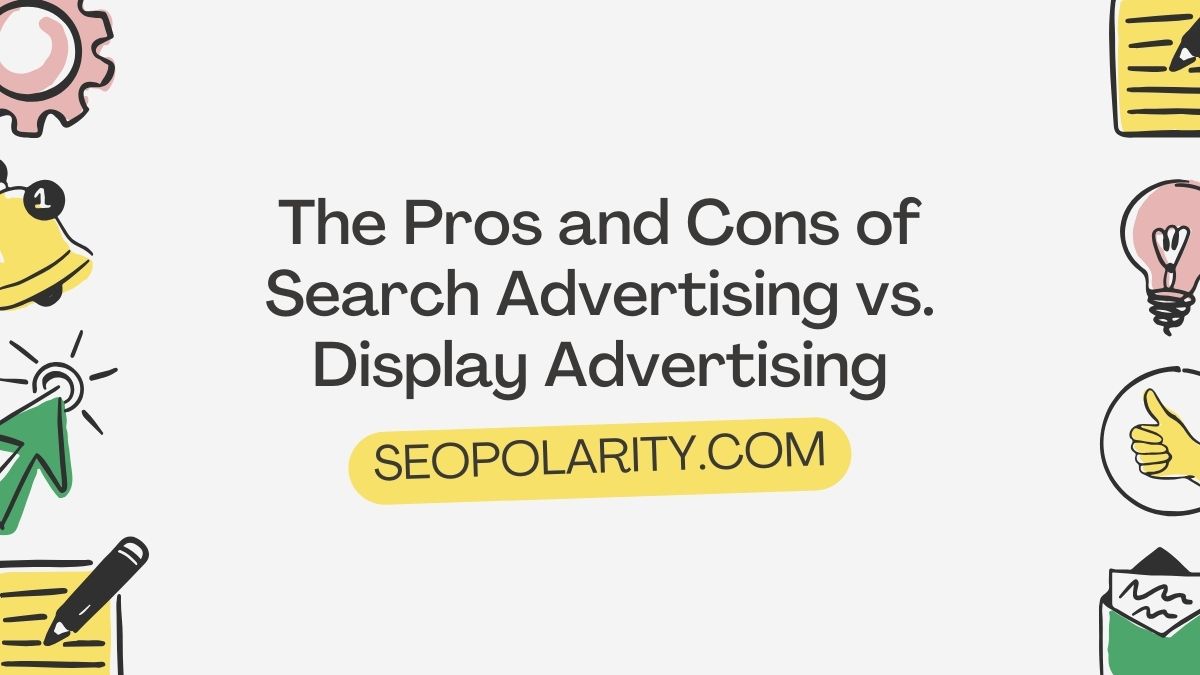
Digital marketing has a vast geography. Two main players take center stage: Search Advertising vs Display Advertising. Businesses want to boost their online visibility and engage with their target followers. The choice between these two strategies is vital. In this comprehensive disquisition, we claw into the pros and cons of Search Advertising. Display Advertising, unraveling the distinct characteristics and advantages each brings to the table.
I. Search Advertising:
Pros:
a. Intent-driven Reach:
Search Advertising leverages the power of search machines, allowing businesses to tap into stoner intent. The ads target druggies searching for specific products or services. The ads also target a large, specific group.
b. Measurable ROI:
The performance of search advertisements can be fluently tracked and measured. Tools like Google Advertisements give businesses insight into clicks, prints, and conversion rates. This helps them optimize ads for the most return on investment.
c. Cost Control:
Search Advertising operates on a pay-per-click ( PPC) model, furnishing businesses with control over their budget. Advertisers only pay when druggies click on their ads. It is cost-effective for businesses of all sizes.
d. Quick Results:
Search advertisements can induce nearly instant results. As soon as a crusade is launched, businesses can start appearing in search results. They can attract implicit guests. This makes it great for those seeking rapid results.
Cons:
a. Intense Competition:
Popular keywords in hunting ads often have much competition. This leads to higher ad prices. Small businesses may find it grueling to contend with larger players in the request.
b. Limited Creativity:
Search ads are confined to a small textbook format. This limits creativity compared to display ads. Advertisers must draft compelling dispatches within character constraints.
c. Dependency on Search Engines:
The success of Search advertising is nearly tied to Search machine algorithms. Changes in algorithms can impact announcement visibility. Businesses may need to adjust quickly to stay relevant.
II. Display Advertising:
Pros:
a. Visual Appeal:
Display ads are innately visual. They let businesses show their products with rich images and multimedia. This visual appeal can significantly enhance brand mindfulness and recognition.
b. Broad Reach:
Display advertisements have a broader reach, appearing on colorful websites across the internet. This great visibility helps businesses target a new audience. It also boosts brand exposure beyond search results.
c. Creative Freedom:
Display ads offer much creative freedom. They let advertisers trial different formats, sizes, and designs. This inflexibility fosters invention. It lets businesses mold their messaging to resonate with their followers.
d. Retargeting Opportunities:
Display advertisements exceed in retargeting strategies. By using eyefuls to track stoner geste, businesses can show ads to druggies who visited their site. This builds brand mindfulness and encourages change.
Cons:
a. Ad Blindness:
Display ads are prone to ad blindness. Addicts consciously or subconsciously ignore banner ads. This is due to their high frequency across websites. This challenge makes it vital for advertisers. They must produce charming and engaging content.
b. Limited Intent Targeting:
Unlike search advertising, display advertisements aren’t driven by stoner intent. They’re shown to druggies based on their online behavior and interests. These may not align with immediate purchase intent.
c. Higher Costs:
Display advertising, especially on popular websites, can be more precious than search advertising. Businesses may need to allocate a big budget. They need it to secure top spots in high-end business spots.
d. Complex Performance Tracking:
Measuring display ad effectiveness is harder than for search ads. Metrics like viewability and engagement are technical tools. Criterion models may pose challenges in directly finding conversion sources.
Conclusion:
In digital marketing, the choice between Search Advertising and Display Advertising isn’t one-size-fits-all. Businesses must estimate their needs, target followers, and budget accurately. This will help them choose the best strategy or a mix of both. Search Advertising aligns with stoner intent and offers measurable results. Display Advertising thrives on visual appeal and broad brand exposure. Balancing the two can build an important community. It will maximize online presence and drive business success. The key is to understand the unique pros and cons of each system. Then, make a strategy that fits the main marketing goals.




